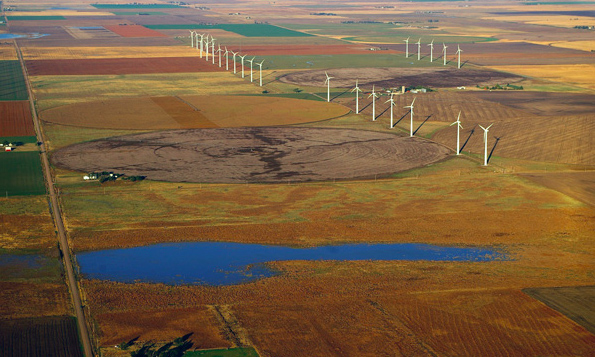Kansas Statistical Abstract's 51st edition demonstrates growth in wind energy, special taxing districts

LAWRENCE — For more than a half-century, the Kansas Statistical Abstract has provided invaluable social and economic data that has aided Kansans in promoting and governing their communities. The Institute for Policy & Social Research at the University of Kansas in September published online for free the 51st edition, which contains a wide variety of statistical data broken down by state, county and city.
For example, the new edition of the report demonstrates the growth of both wind energy production in the state as well as the number of special taxing districts that have cropped up in Kansas in recent years.
"KU has provided this service to people across the state for more than 50 years, and it's valuable to be able to see trends like these in Kansas, especially as policymakers and community leaders plan for the future," said Genna Hurd, IPSR associate researcher and KSA editor.
The 51th edition includes statistics through August 2017 on 16 categories: Agriculture; Banking and Finance; Business, Industry, and Exports; Climate; Communications and Information; Courts, Crime, and Public Safety; Education; Employment and Earnings; Energy and Natural Resources; Government; Housing and Construction; Income; Parks and Recreation; Population; Transportation; and Vital Statistics and Health.
IPSR staff members who worked on the new edition said the data indicated potential developments in some of the changing landscape of the state regarding renewable energy policy and tax policy.
The report notes U.S. Department of Energy statistics that found in Kansas wind energy has grown from less than 1 percent of net electricity generation in 2005 to 24 percent in 2015. Wind has become the second-largest power provider in Kansas after coal.
The current edition also would give the public and community leaders a sense of the history of sales tax rates by county and city across the state, especially the number of special taxing districts that have popped up in the last decade.
Special taxing districts include community improvement districts (CID), transportation development districts (TDD), and sales tax and revenue bonds (STAR). IPSR staff indicated that it has been quite interesting to see how the use of special taxing districts has grown since IPSR first started publishing this data.
Hurd said the table was first published in the KSA's 43rd edition in September 2009, and the state had 29 special taxing districts located in 11 counties. Five years later, in 2014, the state had 89 special taxing districts in 22 counties. The current edition shows that the state now has 147 special taxing districts located in 32 counties.
"This table is just one example of the value-added service — relevant data in a convenient and timely format — the KSA provides to the citizens of Kansas," Hurd said.
IPSR staff members said data in the Kansas Statistical Abstract can be especially useful to policymakers at the state and local levels as they weigh various issues, apply for grant funding or conduct other business.
"Having all these different sets of data in one place has become essential for local and state leaders," said Xanthippe Wedel, an IPSR senior research data engineer who leads collection of the data. "In a globalized economy, many communities are trying to look at Kansas and how it compares with our peers."
KU published the first edition in 1966.
Photo: Aerial view of a wind farm in Gray County. Photo courtesy of the Kansas Geological Survey.